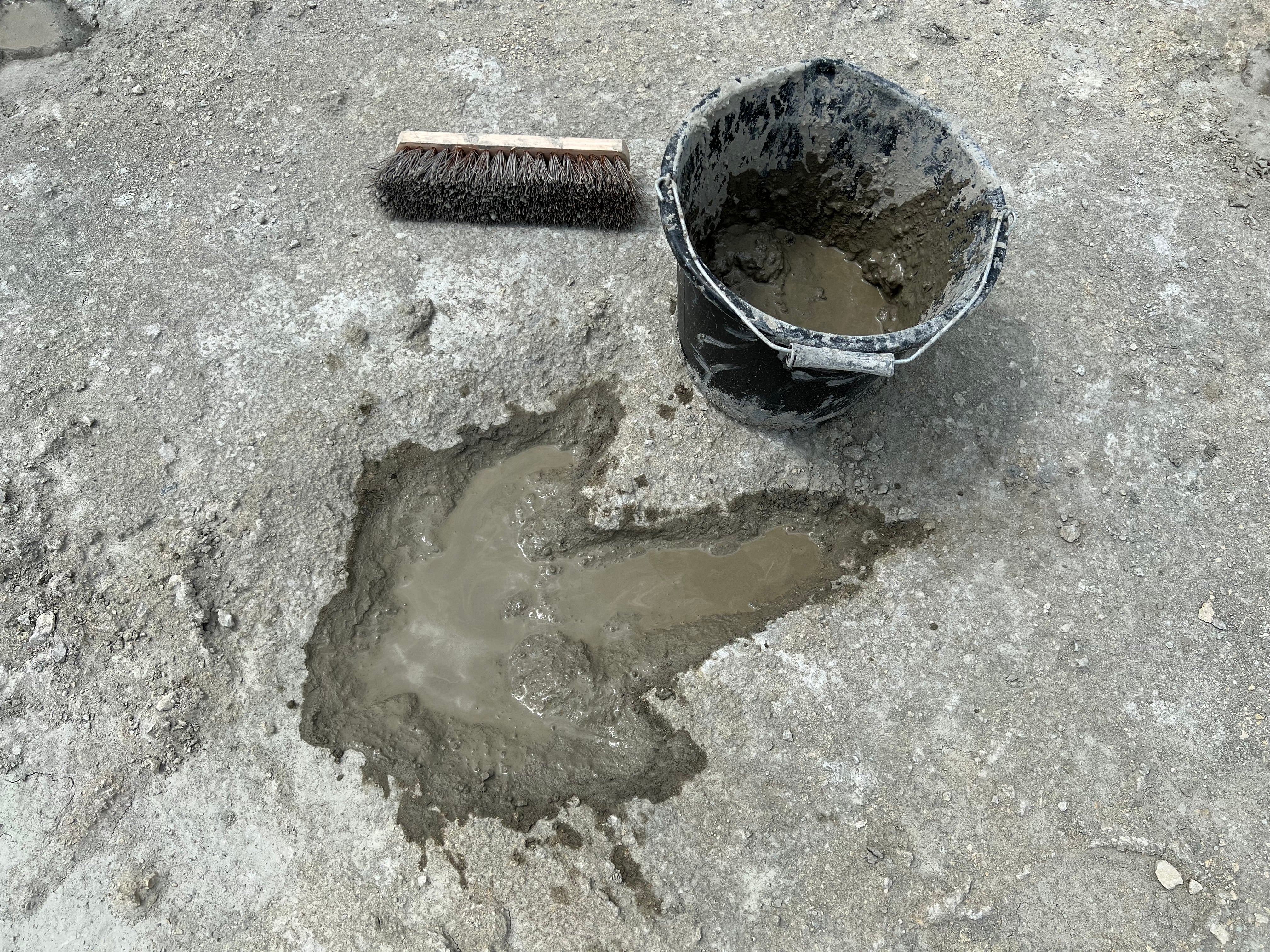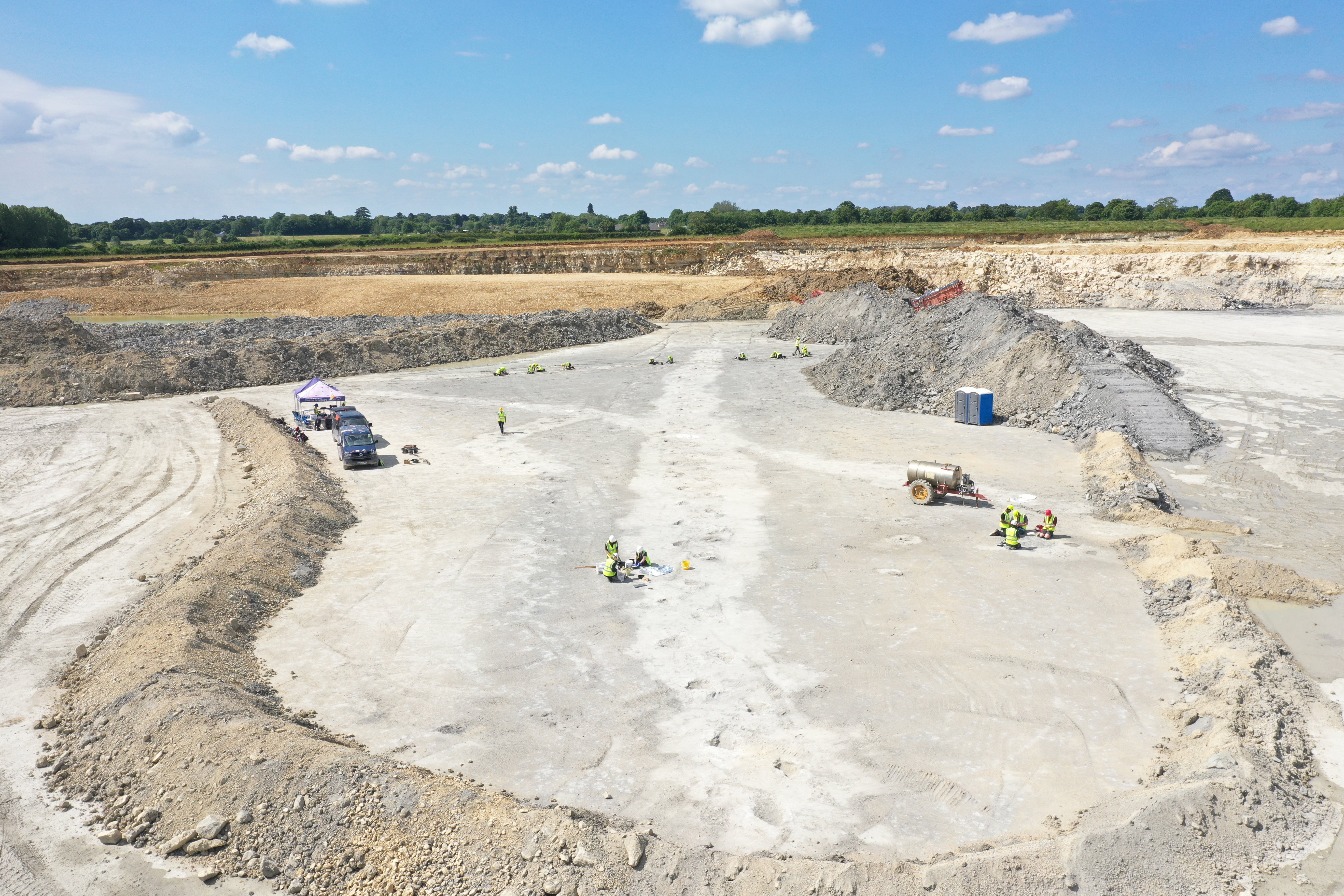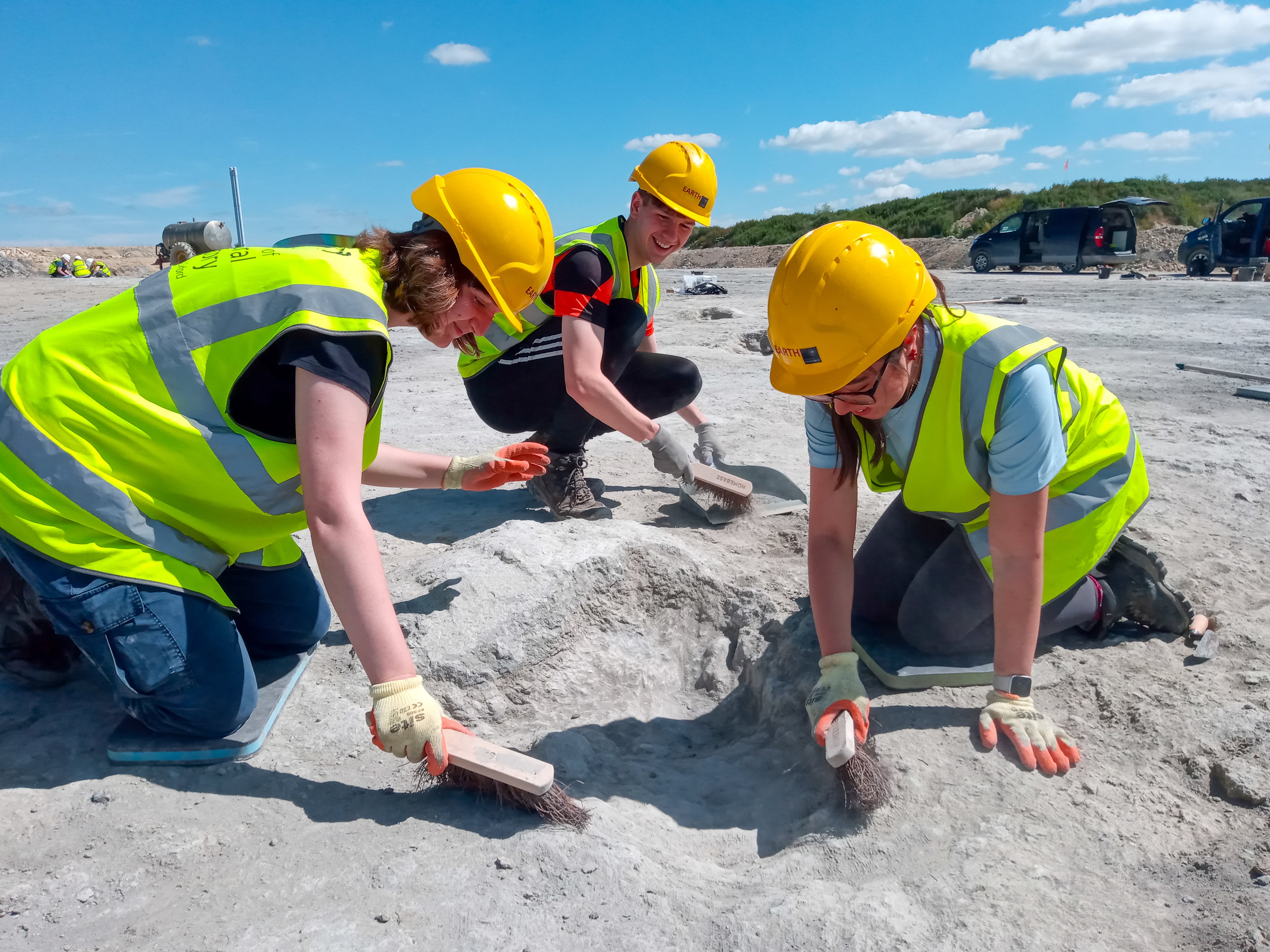UK’s largest ever dinosaur footprint site unearthed in Oxfordshire
Tracks are thought to have been created by a four-legged Cetiosaurus and the meat-eating Megalosaurus

Your support helps us to tell the story
From reproductive rights to climate change to Big Tech, The Independent is on the ground when the story is developing. Whether it's investigating the financials of Elon Musk's pro-Trump PAC or producing our latest documentary, 'The A Word', which shines a light on the American women fighting for reproductive rights, we know how important it is to parse out the facts from the messaging.
At such a critical moment in US history, we need reporters on the ground. Your donation allows us to keep sending journalists to speak to both sides of the story.
The Independent is trusted by Americans across the entire political spectrum. And unlike many other quality news outlets, we choose not to lock Americans out of our reporting and analysis with paywalls. We believe quality journalism should be available to everyone, paid for by those who can afford it.
Your support makes all the difference.The UK’s biggest ever dinosaur trackway that is over 166 million years old has been discovered in an Oxfordshire quarry.
A worker at Dewards Farm Quarry spotted the 200 footprints while he was driving a digger and encountered several humps in the ground.
Specialists believe the criss-cross tracks on the limestone floor were created by the long-necked sauropod Cetiosaurus and the meat-eating Megalosaurus, with the longest trackways reaching 150m in length.
More than 100 scientists, students and volunteers joined an excavation at the quarry over the summer, which will feature on the new series of BBC’s Digging for Britain.

"This is one of the most impressive track sites I’ve ever seen, in terms of scale, in terms of the size of the tracks," said Prof Kirsty Edgar, a micropalaeontologist from the University of Birmingham.
"You can step back in time and get an idea of what it would have been like, these massive creatures just roaming around, going about their own business."
Five different trackways have been discovered but more could be found as only part of the quarry has been excavated. Dinosaur trackways had previously been discovered in the 1990s at a nearby site.
At the time, the dinosaurs would have been living in an environment covered by a shallow lagoon, with their prints left as they walked across the mud.

Scientists analysing the tracks have theorised that something must have happened to preserve the fossils, such as a storm which deposited sediments on top of the footprints which prevented them from being washed away.
Prof Richard Butler, a palaeobiologist from the University of Birmingham, said: "The really lovely thing about a dinosaur footprint, particularly if you have a trackway, is that it is a snapshot in the life of the animal.
"You can learn things about how that animal moved. You can learn exactly what the environment that it was living in was like. So tracks give us a whole different set of information that you can’t get from the bone fossil record."
To analyse the prints, the team of researchers took more than 20,000 photographs to create 3D models of the footprints and made casts of the tracks.

Four of the tracks were made by sauropods, who walked on four legs and reached up to 18m in length.
Those others are thought to have been made by a Megalosaurus, who were agile hunters and would have been “the largest predatory dinosaur that we know of in the Jurassic period in Britain”.
The operators of the quarry, Smiths Bletchington, are now working with scientists and Natural England on options for preserving the site, with no final decision made on the future of the trackways.
Join our commenting forum
Join thought-provoking conversations, follow other Independent readers and see their replies
Comments